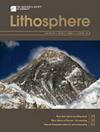New Insights on the Early Proto-Tethys Subduction History: Evidence from Ages and Petrogenesis of Volcanic Rocks in the Bulunkuole Complex, West Kunlun Orogen
IF 1.8
4区 地球科学
Q3 GEOCHEMISTRY & GEOPHYSICS
引用次数: 0
Abstract
The Proto-Tethys Ocean has played a significant role in the geological history of Earth. However, ongoing debates persist regarding the timing and polarity of its early subduction. Volcanic rocks associated with iron deposits in the Bulunkuole Complex, West Kunlun Orogen, offer insights into both the complex’s formation age and Proto-Tethys evolution. This study presents newly obtained zircon U–Pb age data (~536 Ma) along with comprehensive whole-rock major and trace element and Sr–Nd–Hf isotope analyses of these volcanic rocks. Our dataset implies that the Bulunkuole Complex partly formed in the early Paleozoic rather than entirely in the Paleoproterozoic, as previously suggested. Geochemically, the volcanic rocks exhibit enrichments in large ion lithophile elements and light rare earth elements, along with depletions in high-field strength elements. They also display elevated initial 87Sr/86Sr values (0.71093, 0.72025) and negative εNd(t) values (−5.13, −6.18), classifying them as continental arc volcanic rocks. These geochemical fingerprints, complemented by zircon εHf(t) values (−12.7 to −1.6), indicate that the parental magmas of the volcanic rocks were produced by partial melting of the lithospheric mantle wedge, which had been metasomatized by subducted sediment-derived melts. The available data, in conjunction with previously published findings, strongly suggest that the Proto-Tethys Ocean subducted southward prior to approximately 536 Ma due to the assembly of Gondwana. Subsequent slab rollback may have resulted in a crustal thinning of 9–25 km during 536–514 Ma. Further shifts in subduction dynamics led to the transition from high-angle subduction to either normal or low-angle subduction, facilitating the formation of a thicker crust ranging from 39 to 70 km between 514 and 448 Ma. This study, therefore, provides valuable insights into the early evolution of the Proto-Tethys Ocean and contributes significantly to our understanding of the tectonic history of the West Kunlun Orogen.对早期原特提斯俯冲历史的新认识:西昆仑造山带布伦郭勒复合区火山岩年龄和岩石成因的证据
原特提斯洋在地球地质历史上发挥了重要作用。然而,关于其早期俯冲的时间和极性的争论一直存在。西昆仑造山带布伦郭勒复合体中与铁矿床相关的火山岩为了解该复合体的形成年代和原特提斯演化提供了线索。本研究提供了新获得的锆石U-Pb年龄数据(约536 Ma),以及对这些火山岩进行的全面的全岩主要元素、微量元素和Sr-Nd-Hf同位素分析。我们的数据集表明,布伦郭勒复合体部分形成于早古生代,而不是像以前认为的那样完全形成于古近代。从地球化学角度看,火山岩富含大离子亲岩元素和轻稀土元素,同时贫乏高场强元素。它们还显示出较高的 87Sr/86Sr 初始值(0.71093,0.72025)和负的 εNd(t)值(-5.13,-6.18),可将其归类为大陆弧火山岩。这些地球化学特征以及锆石的εHf(t)值(-12.7 至-1.6)表明,火山岩的母岩浆是由岩石圈地幔楔部分熔化产生的,而岩石圈地幔楔是由俯冲沉积物衍生的熔体变质而成的。现有数据以及之前公布的研究结果有力地表明,由于冈瓦纳的形成,原特提斯洋在大约 536 Ma 之前向南俯冲。随后的板块回滚可能导致地壳在 536-514 Ma 期间变薄了 9-25 km。俯冲动力学的进一步转变导致了从高角度俯冲向正常或低角度俯冲的过渡,促进了在 514 至 448 Ma 期间形成 39 至 70 km 厚的地壳。因此,这项研究为了解原特提斯洋的早期演化提供了宝贵的见解,并大大有助于我们了解西昆仑造山带的构造历史。
本文章由计算机程序翻译,如有差异,请以英文原文为准。
求助全文
约1分钟内获得全文
求助全文
来源期刊

Lithosphere
GEOCHEMISTRY & GEOPHYSICS-GEOLOGY
CiteScore
3.80
自引率
16.70%
发文量
284
审稿时长
>12 weeks
期刊介绍:
The open access journal will have an expanded scope covering research in all areas of earth, planetary, and environmental sciences, providing a unique publishing choice for authors in the geoscience community.
 求助内容:
求助内容: 应助结果提醒方式:
应助结果提醒方式:


